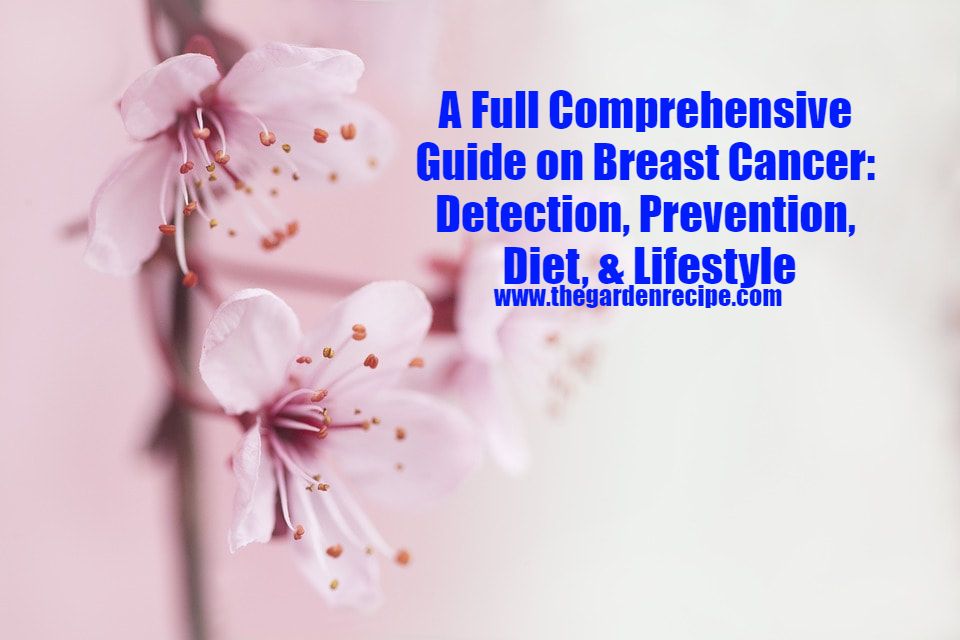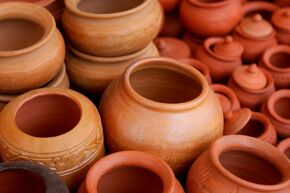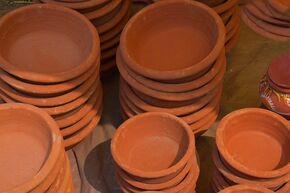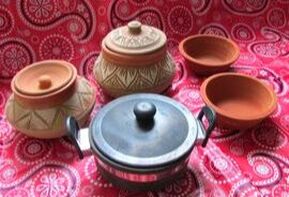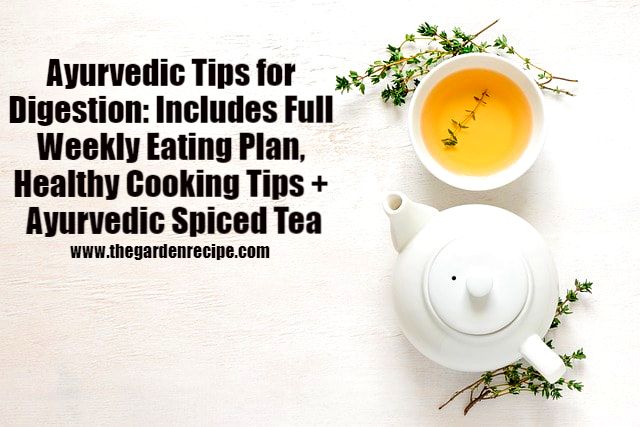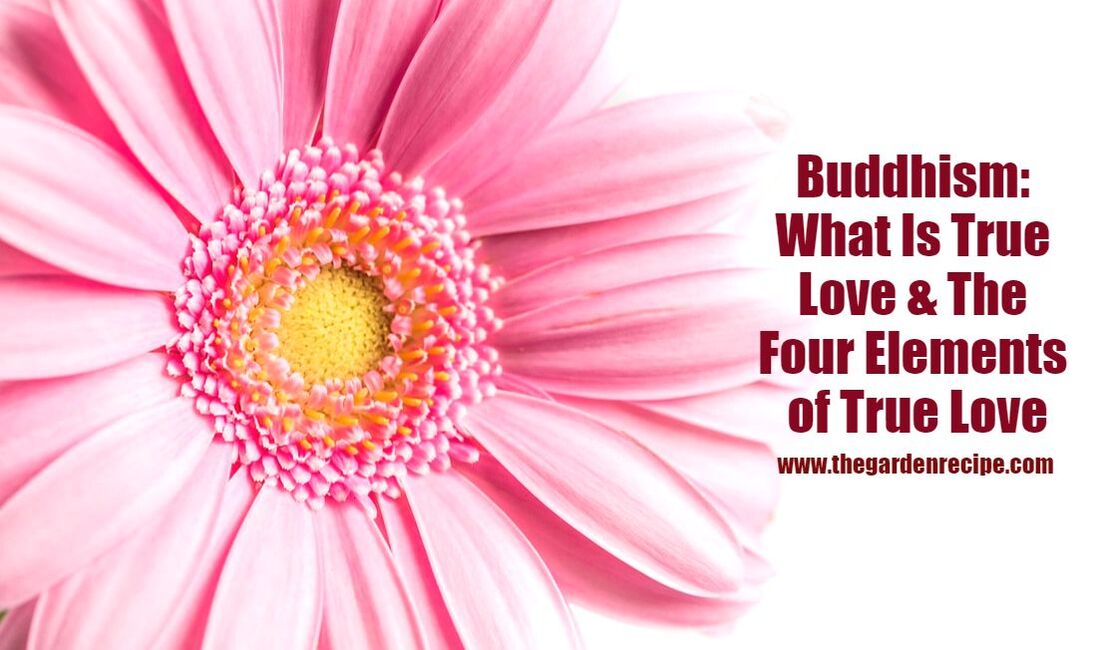|
Find out everything you need to know about breast cancer in this article - from the types of breast cancers to detection and stages to prevention and cure and nutrition choices as well. Breast cancer is one of the most deadliest cancer in women and though it is mainly found in women, but breast cancer is also common in men, though not as much as it is in women. There are lot of resources on the internet on breast cancer - from online support groups to clinics to conventional treatment centers and finally, articles that describe what breast cancer is. BUT, they all lack the most vital component of this cancer - the solution based points on nutrition and steps one can take that help give immediate results and start the healing process of the body.
In this article, I have gone above and beyond to collect the best researched information from the net but more than that, I have added from my knowledge the best kept secrets on healing breast cancer - nutrition, herbs, spiritual aspects that unlock the healing potential of the client and native therapies that can help detox the body and get the lymph moving, all crucial for healing from breast cancer. So, let's start. Some facts about breasts - Breasts are made up of 3 different parts - lobules (glands for milk production), ducts (tubes that carry the milk to the nipple), and connective tissues (the fatty part of the breasts that gives them their shapes and holds everything together). What is Breast Cancer? Cancer is any disease where cells start growing out of control - abnormally. Breast cancer is therefore, cancer of the breast cells - where they start growing abnormally. The type of breast cancer one has tells where the cells have grown abnormally. When breast cancer spreads outside the breasts, it is called metastatic breast cancer. Breast cancer occurs mainly in women and most begin in ducts or lobules. What types of breast cancer are there? Most breast cancers are carcinomas - tumors in the epithelial cells of the body, cells that are on the surface of our body like skin, vessels, organs and glands. When carcinomas show up in the breasts, it is called adenocarcinomas - either in the ducts or the lobules. Just for knowledge - adenocarcinoma is cancer of mucus-producing glands of the body, or to put it another way, adenocarcinoma is the cancer of the glandular (secretory) cells, so like, pancreas, prostate, ducts/lobules in women's breasts, lungs, colon, and so on. Adenocarcinoma is the malignant one, while adenoma is the benign tumor. There are basically 4 types of breast cancer plus few more but these are the most common:- 1. Ductal carcinoma in situ (DCIS) or Lobular carcinoma in situ (LCIS) - It is abnormal cells in the ductal part (milk ducts) or milk glands (lobules) of the breasts. Both of these are not considered as threatening diagnosis but rather looked at as the first sign of possibly developing breast cancer in the future, and both are non-invasive (meaning the abnormal growth hasn't spread out of the milk duct or lobules and metastasized). They are both considered as stage 0 breast cancer. 2. Invasive ductal carcinoma - This is the most common type of breast cancer seen in women, along with invasive lobular carcinoma. 3. Inflammatory breast cancer (IBC) - Rare type of breast cancer which causes the breasts to swell up and look inflamed and red. In this cancer, the abnormal cells block the lymphatic vessels of the skin covering the breasts. IBC accounts for only 1 to 5% of all breast cancer cases. IBC is considered a very aggressive cancer as it grows more rapidly than other breast cancers. It is often hard to detect and is often found when already at advanced stage (usually stage III). 4. Metastatic breast cancer - Breast cancer that has spread to other parts of the body, and thus, has metastasized(or invasive). How many stages are in breast cancer? There are 5 stages of breast cancer - stage 0 to 5. Stage 0 is noninvasive (DCIS or LCIS) while stages 1 to 4 are invasive breast cancers. The breast cancer staging system is based on TNM - T for tumor size and whether it has metastasized in nearby tissues, N for checking whether it has spread to lymph nodes, and M for metastasis. More new factors added when staging breast cancer patients - American Joint Committee on Cancer (AJCC) updated the TNM staging system in 2018. The following points were added - 1. Tumor grade - how much do the cancer cells look like normal cells? 2. HER2 (human epidermal growth factor receptor 2) Status - are these cancer cells making too much HER2 protein? Or, is the breast cancer HER2 negative or positive? 3. Oncotype DX Score - no cancer in lymph nodes but estrogen receptor positive and HER2 negative. 4. Estrogen & Progesterone receptor status - do cancer cells have the receptors for these hormones? What is BRCA1 and BRCA 2? BRCA1 (BReast CAncer gene 1) or BRCA2 (BReast CAncer gene 2) are both abnormal genes and are used to determine if the person's breast cancer is genetic, as in hereditary or not. If you have a family history of breast or ovarian cancer or both, then, these two genes could be at play. Women with these genes have a 72% risk of being diagnosed with breast cancer, as opposed to general 12-13% for women. How is breast cancer detected? The most common method of detecting breast cancer is a mammogram, which is basically an X-ray of the breasts. Conventional treatment centers advice its women patients to do a mammogram every year for early detection of breast cancer. From age 40 to 54, conventional medicine wants women to get mammogram done every year and for those over 54, they recommend every 2 years! How is a mammogram done? A nurse or technician will help place your breast on a X-ray machine - on a plastic plate and then, another plastic plate from the top will press the breast. This is for making the breast flat so that the X-ray can be taken. Then, the same steps are repeated to get the side view of the breast. Are mammograms painful? Yes. Mammograms are painful for most women and uncomfortable. The breasts are pressed hard under the machine and this cannot be easy for any women! - irrespective of whether you have small or large breasts. Are mammograms safe & reliable? 1. NO. Mammograms are NOT safe and nor are they reliable and are an unethical way of subjecting a women's breast to this barbaric test. On top of the pain and uncomfortableness that this procedure causes, mammograms also expose the women's breast to radiation. 2. Mammograms are also very notorious for producing both the false-negative and false-positive results - thus, wasting the patient's money and highly misleading them. False-negative result - Normal mammogram results even though the patient has breast cancer False-positive result - Abnormal mammogram results even though there is no breast cancer 3. Another major flaw of mammograms is that they when they do detect some abnormal cells in the breasts, the doctors can't tell from the mammogram results if the treatment is necessary or not. For e.g. DCIS or even some invasive breast cancer may show up in your mammogram but just alone from the mammogram results, your doctor may not be able to tell if it will spread or if it is life-threatening. In that case, to diagnose a patient and to give them unnecessary treatment is wrong. This is called over-diagnosis and over-treatment. 4. Another problem with mammograms is that if the patient has high-density breasts, the mammogram may not be able to detect the abnormal cells correctly. Low-density breast tissue is easier to detect in mammograms. Thus, this can lead to false results. 5. Women with BRCA gene are already at risk of breast cancer and with getting mammograms, they are getting more radiation and thus, increasing their chances of breast cancer even more. 6. Mammograms also can rupture the tumor and spread the abnormal cells in the breasts. This is easy to understand - mammograms apply 42 lbs of pressure on a woman's breast - only 22 lbs is needed to rupture the cancerous tumor!. What other options do I have besides mammograms? Thankfully, there are many options besides the dreadful and hateful mammograms. But I advice you to do more than one type of these test options to make sure your results are 100% accurate and you are, what I call, in a "safe zone." 1. Clinical Breast Exams (CBE) - This is the good old physical breast exam done by a healthcare professional. 2. Thermography - This uses infrared technology to detect any abnormality in breasts. 3. Digital mammography - Same technique but lower radiation and the operator can see the images right away on the computer. 4. Ultrasound - The safest option besides CBE, since it does not use radiation to detect cancers and is even safe to use during pregnancy! Very affordable, easy on the patient and pain-free. On top of that, detects cancers same rate as mammograms. The only drawback is that it cannot detect tumors smaller than 1 cm in size. 5. Estrogen metabolite test - This test, such as the DUTCH test, will take your urine sample and see how well you are metabolizing estrogen and if you are at a risk for hormonal cancers like breast or ovarian. 6. Breast MRIs - Yes. You can speak up and request for a breast MRI as that is another option. MRIs are also excellent as they provide a more detailed image of the breasts and thus, are more accurate. What are the symptoms of breast cancer? Symptoms for breast cancer include swollen or inflamed breasts, red color breasts, lumps in breasts or armpits, redness near the nipples, pain in the breasts or in the nipples, nipples pulled in, discharge from nipples like blood or so, and changes in shape or skin texture of the breast or nipples. How can I prevent or cure my breast cancer? This is the most interesting and empowering part for me - to tell you how to prevent breast cancer and how to heal breast cancer, if you have it. The first thing in breast (or any cancer or disease) prevention and healing, is to let go of your toxic habits that led you to this point in your health crisis. How did you get here? What are the habits that led you to this point? Evaluate and then let them go. Make the changes necessary so that your health can re-emerge and re-bound better than ever before! So, let's talk about some risk factors when it comes to food, that leads to bad health and well, breast cancer. Risk factors for breast cancer - What you eat is what you become - it's as simple as that. Along with eating habits, which we will discuss more below, you must look into your stress, sleep patterns, relationships, toxic people or addictions, as well as heavy emotions that you have not dealt with or are struggling to come to terms with. Emotions from life events like losing a loved one, toxic divorce, troubled or abusive childhood, sexual abuse, incest, rape, miscarriages, or dull, sad, unhealthy home environment, or work stress, all are indicators of what needs to be corrected, healed and settled within. Once you bring the emotions and the events to the surface and start the healing process, you will see a remarkable difference in your cancer or your health overall. There is NO place for doubt here. But first, you need to face your emotional baggage like grief, anger, sadness, depression, anxiety, loss of hope (hopelessness), lack of self as in, self-worth, self-confidence, self-love, self-harmony, self-esteem, and/or suicidal thoughts, hatred, revenge or resentment towards someone (like sexual abuser, a parental figure, some other adult or relative who did you wrong, etc.) and negative feelings that lead to unhealthy addictions like sugar or ice-cream binge eating, etc. OK. Now, we talk more about the food choice that will help you. But first, what you must NOT do... Things you MUST avoid at all costs - 1. Processed foods - Junk or fast foods, baked goods sold in stores/grocery isles, soda drinks, commercial desserts, shakes, ice-creams, etc 2. Sugar - White sugar, high fructose corn syrup, sugar from inflammatory foods like baked goods, junk food, refined carbs, dairy, ice-cream, sodas, muffins, cookies, etc. 3. Dairy - Dairy products like milk, cheese, ghee, butter, margarine, buttermilk, yogurt, and foods made with dairy milk like baked goods, cakes, pizza, croissants, snacks like muffins, cookies, etc. 4. Animal Consumption - All meat like steak/beef, pork, lamb, chicken, etc., lard, tallow, and seafood like fish, shrimp, lobster, crab, etc. Even if you say, you buy your meat from "organic, ethical" farms, still remember, it's an innocent animal that lost its self-worth and died just because of you - your demand for meat. You are what you consume - all the ill feelings like anger, sadness, hopelessness, fear, terror, that this poor animal must have felt when being hit by a large knife are getting transferred in your body, into your cells. You said you want to prevent cancer?! Alright!! 5. Whites - White salt, white dairy milk, white sugar, white bread. 6. Toxic Drugs - Medicines like prescription meds, over-the-counter, chemo, radiation, and of such types. 7. GMOs - Products like dairy, golden rice, apples (generally gala apples but might be others too), regular corn, soy, canola oil, sugar beets, potatoes, squash, papaya, alfalfa, salmon, aspartame and fabric like cotton. Good To Know - More than 95% of animals raised for meat and dairy industry eat gmo crops in the U.S. This is according to FDA website, by the way. How can I prevent or heal breast cancer naturally? Besides dealing with your heavy, toxic emotions and making peace with your past, diet and lifestyle habits are your most important and powerful tools in preventing or beating breast cancer. This is going to help you what I discuss below but make note, this is NOT to be substituted for any medical advice. Herbs & Herbal Teas - Cancer fighting herbs like neem, garlic, ginger, periwinkle, echinacea, essaic tea, burdock root, camellia sinesis, ginseng, turmeric and such will greatly help you! However, do not take all the herbs at once and instead, work with someone who knows a lot about herbs so you can get the herb that your body needs most and has the most efficacy for your type of cancer. NOTE: Plz. do NOT start taking all the herbs listed here or on the net. Herbs have medicinal properties and you need to be guided when taking them. On top of that, a full hands-on methodical approach is needed when one needs to heal from cancer - even if going a full holistic route. Therefore, this is just a guide on some herbs you can check out, but you still need to work with someone, like a integrative doctor, health coach, holistic healer, and so on. Nutrients - 1. Protein - All lentils, beans, legumes, nuts & seeds, soy, nut butters. 2. Iodine - Kelp, wakame, dulse, nori, prunes, lima beans, sea lettuce, rockweed, etc. 3. Selenium - Mushrooms, Brazilian nuts, sunflower seeds and butter, chia seeds, walnuts, flax seeds, cashews, peanuts, firm tofu, chickpeas, beans, etc. 4. Fruits - Soursop, graviola, amla (Indian Gooseberry), papaya, pineapple, apples, and well, all fruits are great as they are a source of many vital antioxidants and vitamins and minerals. 6. Seeds - Flax seeds, chia seeds, black cumin seeds, mustard seeds, basil seeds, dill seeds, cumin seeds, fennel seeds, caraway seeds, sesame and sunflower seeds, pumpkin seeds, hemp seeds, - well, all seeds are a MUST in a cancer patient's diet! 7. Healthy Fats - Organic unrefined coconut oil, mustard oil, hemp oil, olive oil, coconut butter, nuts and nut butters, brazilian nuts, almonds, cashews, pine nuts, avocadoes, olives, coconut pulp, etc. 8. Vegetables - ALL vegetables. Include variety of leafy greens, root vegetables, cruciferous vegetables, and even some potatoes! Onions are a must in breast cancer patient's diet - due to their rich sulfur content. 9. Sprouts - Your FIRST choice for sprouts to prevent or heal from breast cancer should be broccoli sprouts - for their rich supply of sulforaphane. Enjoy variety of sprouts but just make sure they are organic. 10. Healthy Soy Items - Edamame, tofu, soymilk, black soybeans, miso, etc. NOT soy items like soy 'hot dogs', or soy 'bacon' and such - these are highly processed soy items and contain more bad than good! 11. Bitters - You MUST include some bitter foods daily in your diet and this is to clean the liver and help your digestion. Arugula, cacao, dandelion root, neem, bitter gourd, and such types of plants are what you need to consume with your meals daily. 12. Healthy Sugar - Fruits, dates, coconut sugar, monk fruit, stevia. To eat soy or not to eat soy?! YES!! You must eat soy to keep your breasts healthy. The soy should be certified organic and NOT gmo - that is where the problem is with soy, the fact that in the U.S., most of the soy crop grown for food consumption is gmo. Soy has been consumed by countries like China and Japan since million centuries and they have some of the lowest rate of cancer, including breast cancer. If soy was so bad, then, wouldn't these countries have extremely high rates of breast cancer since time immemorial? But rather, it is quiet the opposite. Soy helps lowers cholesterol, is a good source of isoflavones, calcium, protein, fiber, iron and polyunsaturated fat. Soy is rich in phytoestrogens, found in its isoflavones, and even though they are not the same as estrogens in the women's body, these phytoestrogens can bind to the estrogen receptors in the cells. In this way, soy isoflavones inhibit the effects of our own estrogen - thus, reducing the risk of breast cancer in women. In European research, it was found that soy does not effect the breasts, uterus, thyroid in negative way. Many American institutes like Mayo Clinic, Susan B Comen, American Menopause Society, and more, all agree that soy is beneficial for women and does NOT increase the risk for breast or any other cancer. In fact, it was found that fermented soy milk (FSM) product causes apoptosis (cell death) in breast cancer cells (click reference 6 below at the end). Soy isoflavones, genistein and daidzein, both were found to induce apoptosis and inhibit tumor growth. Soy isoflavones are also chemopreventive (ref. 7) - this is due to the fact that they know how to bind to estrogen receptors. With all this powerful information, it is a must that you include some soy in your diet. Make it organic and you are all set! Check out my recipes with tofu in the 'Recipes' page and get cooking. Last but not least - Your Bra, Breast Massage & Stretching Exercises Also, as an end note, try to avoid bras that are too tight on your breasts. Also, avoid underwire bras. You want something that fits well, allows some air circulation and does not contain plastic right next to the breasts (underwires). At night, wear an older, more comfy bra, to allow room for some healthy blood circulation and lymph flow. Doing a breast massage will also help you and you can also go to some professional, certified breast massage therapists to get it done. This is a common practice in Asian countries - one other reason perhaps why Asian women have such low rate of breast cancer. Applying some oils on your breasts like black cumin seed oil - a saint of a oil for cancer patients, is a must if you have breast cancer. This is one of the practices I teach my clients in my coaching. Make this your religious habit and you should see a lot of difference in yoru breast health. Make sure to stretch few times during the day to loosen up your breast muscles, along with the armpits, and the back and neck muscles. This allows for better circulation and fluid flow. With this, we complete another power-packed, knowledge packed article on preventing and healing from cancer - in this case, breast cancer. I hope you have liked and enjoyed this detailed article and that it helps you with keeping your breasts healthy and in preventing cancer. Ref (1). Ref (2). Ref (3). Ref (4). Ref (5). Ref (6). Ref (7) Be Inspired! - See how I worked with 2 of my favorite breast cancer survivors. Check out their story and be inspired! 1. Katia's Testimonial 2. Libby's Testimonial Share The Article! - If this article has helped you, please share it with your loved ones and post it on your FB page and send to others via email. Questions or Comments? - Plz. do NOT e-mail me with any questions or comments regarding this article - post it in the comment section below and I will reply there only. No exceptions! Care to Leave Comments or Feedback - Also, it takes a lot to write each and every article - do care to leave comments and feedback once in a while. It takes time, energy and effort to write such detailed articles and to help as many readers as possible live a healthy life. So, your comments are valuable. Till next article, -Somyata. Have a specific question about herbs or something related? Click Here - You Pay, You Ask! Interested in My Coaching? - Book a FREE 1-Hr Session with Me, before the offer expires! Click HERE.
6 Comments
Mary
12/12/2020 13:55:16
Thank you for this article. I have 2 sisters who have been diagnosed with breast cancer. I am forwarding this article to my children and Bruce’s.
Reply
Somyata
12/12/2020 18:40:21
Aww...Thank you Mary! Have you subscribed to my newsletter? If not, do so as I write a lot about hormone balance and cancer. Also, do take some time and spend on the recipes page, and read some inspiring testimonials (under 'Reviews' from breast cancer survivors that I coached. It will be of much more help to you and your sisters.
Reply
cis
1/6/2021 14:43:44
Good article but...
Reply
Somyata
1/7/2021 10:39:31
Good point but this article is about cancer - so I have to list foods, in this case, fruits that are very powerful and esp. a "must-have" in a cancer patients diet plan. All fruits are great otherwise - I can't list all. So, amla, soursop...etc. - the ones that people with cancer may not know of or may not think of when using nutrition to heal, can now see and include in thir regimen. -Somyata.
Reply
Somyata
7/12/2023 22:46:35
You are so welcome:) Glad you found it helpful. -Somyata
Reply
Leave a Reply. |
Quick Recipes for You Indian Cucumber Salad
Potato Curry in Coconut Milk
Clay Pot Series Videos Clay Pots Buying Guide in India
Bringing Clay Pots from India to US
My Beautiful Clay Pots REVEALED!
Which Clay Pot is Right for You?
Some Helpful Articles Ayurvedic Tips for Digestion
Buddhism: The Four Elements of Love
Buddhism: What Is Metta Meditation?
|
The Garden Recipe - Subscribe To The Newsletter HERE
DISCLAIMER TERMS & CONDITIONS PRIVACY POLICY
All Rights Reserved

